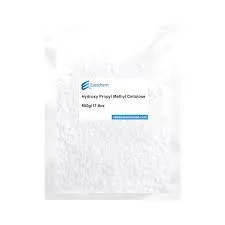
Dec . 09, 2024 17:16 Back to list
Hydroxypropyl Methylcellulose Applications and Benefits in Various Industries
Understanding Hydroxypropyl Methylcellulose (HPMC) A Versatile Polymer
Hydroxypropyl methylcellulose (HPMC) is a semi-synthetic polymer derived from cellulose, a naturally occurring polymer found in the cell walls of plants. HPMC has gained considerable attention in various industries due to its unique properties and its versatility in applications ranging from pharmaceuticals to construction materials.
Chemical Structure and Properties
HPMC is produced by the chemical modification of cellulose through etherification. The resulting polymer features both hydrophilic (water-attracting) and hydrophobic (water-repelling) segments. This dual character allows HPMC to exhibit a range of water-solubility levels, depending on the degree of substitution of the hydroxypropyl and methyl groups. As a result, it can form clear solutions, gels, and films, making it an essential ingredient in many formulations.
One of the main attributes of HPMC is its ability to control viscosity. When dissolved in water, HPMC increases the viscosity of the solution proportionally to its concentration. This property is particularly useful in applications where thickening agents are necessary, such as in paints, adhesives, and food products. Additionally, HPMC is known for its stability and is less prone to degradation under heat or acidic conditions compared to other thickening agents.
Applications in Pharmaceuticals
In the pharmaceutical industry, HPMC is widely used as an excipient in drug formulations. Its ability to form gels and films makes it an excellent candidate for controlled-release systems. By embedding pharmaceutical compounds in an HPMC matrix, manufacturers can achieve sustained release of active ingredients, enhancing therapeutic efficacy and patient compliance.
HPMC also plays a crucial role in the formulation of tablets, capsules, and other dosage forms. It serves as a binder, providing mechanical strength to tablets and helping to maintain their integrity during handling. Furthermore, it enhances the dissolution profile of poorly soluble drugs, facilitating better absorption in the gastrointestinal tract.
Use in Food Products
hydroxypropyl methylcellulose hpmc

The food industry has embraced HPMC as a food additive and thickening agent. Its functionality in stabilizing emulsions and foams makes it valuable in products like salad dressings, sauces, and dairy alternatives. Additionally, HPMC can improve the texture and mouthfeel of food products, contributing to an enhanced sensory experience.
HPMC is often found in gluten-free and low-fat products, where it serves as a substitute for gluten, providing elasticity and structure in baked goods. As consumer demand for healthier food options continues to rise, HPMC's role in creating appealing, safe, and nutritious products will likely grow.
Construction and Building Materials
Another significant application of HPMC is in the construction industry, where it is used as an additive in mortar, plaster, and tile adhesives. HPMC improves the workability and adhesion of these materials, allowing for easier application and stronger bonding. Additionally, due to its water-retention properties, it helps prevent premature drying, thereby enhancing the durability and performance of construction materials.
Environmental Considerations
One of the advantages of HPMC is its environmental compatibility. As a biodegradable polymer, it poses a lower ecological risk compared to many synthetic alternatives. Its derivation from renewable resources aligns with the growing trend towards sustainable manufacturing practices.
Conclusion
Hydroxypropyl methylcellulose (HPMC) is a multidimensional polymer that finds extensive applications across various industries. Its exceptional properties, including viscosity control, solubility, and film-forming ability, make it a critical component in pharmaceuticals, food products, and construction materials. As research continues to unveil new applications and benefits, HPMC is poised to play an increasingly important role in the development of innovative products that meet evolving consumer needs and environmental standards.
-
Versatile Hpmc Uses in Different Industries
NewsJun.19,2025
-
Redispersible Powder's Role in Enhancing Durability of Construction Products
NewsJun.19,2025
-
Hydroxyethyl Cellulose Applications Driving Green Industrial Processes
NewsJun.19,2025
-
Exploring Different Redispersible Polymer Powder
NewsJun.19,2025
-
Choosing the Right Mortar Bonding Agent
NewsJun.19,2025
-
Applications and Significance of China Hpmc in Modern Industries
NewsJun.19,2025







